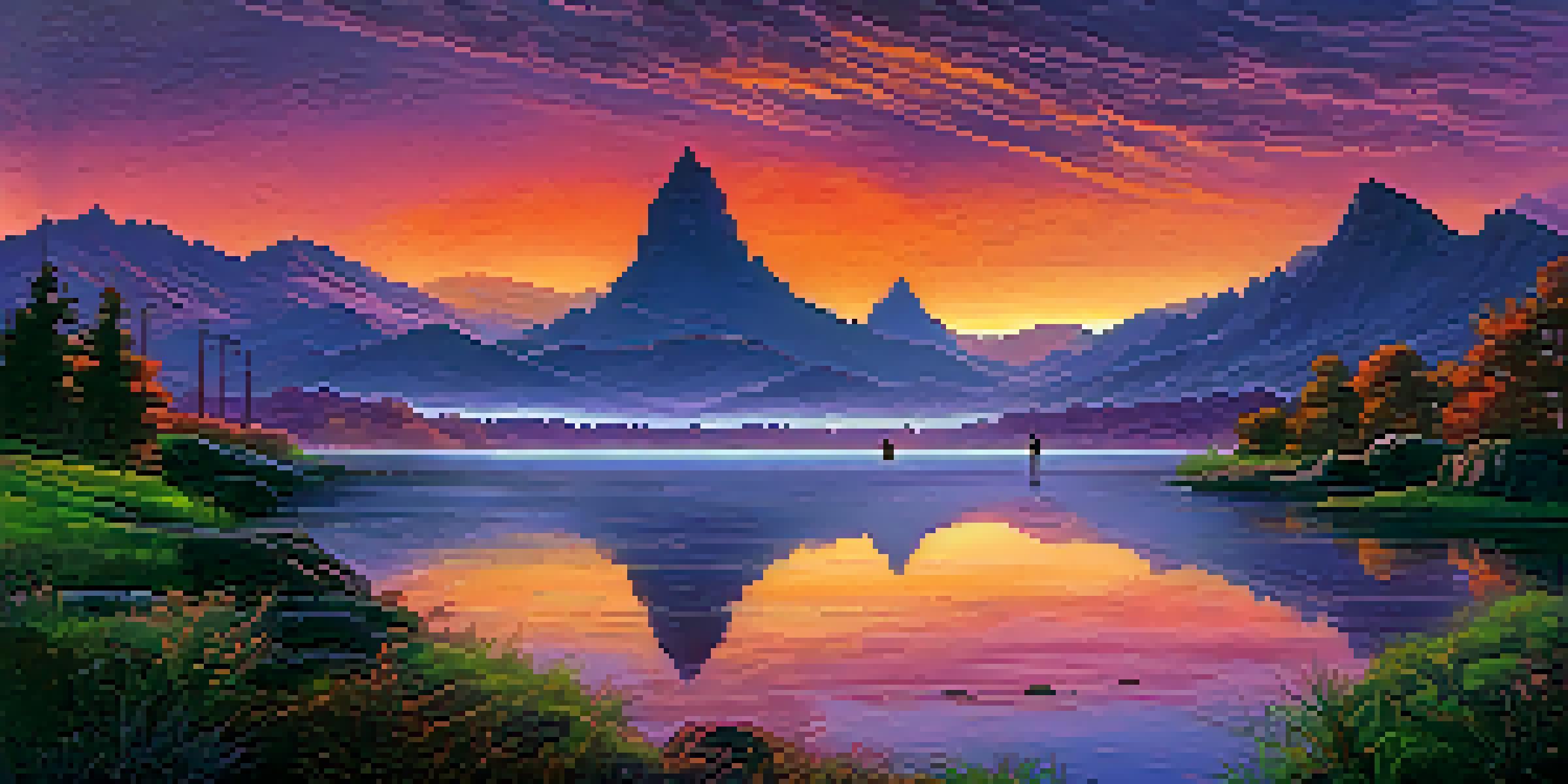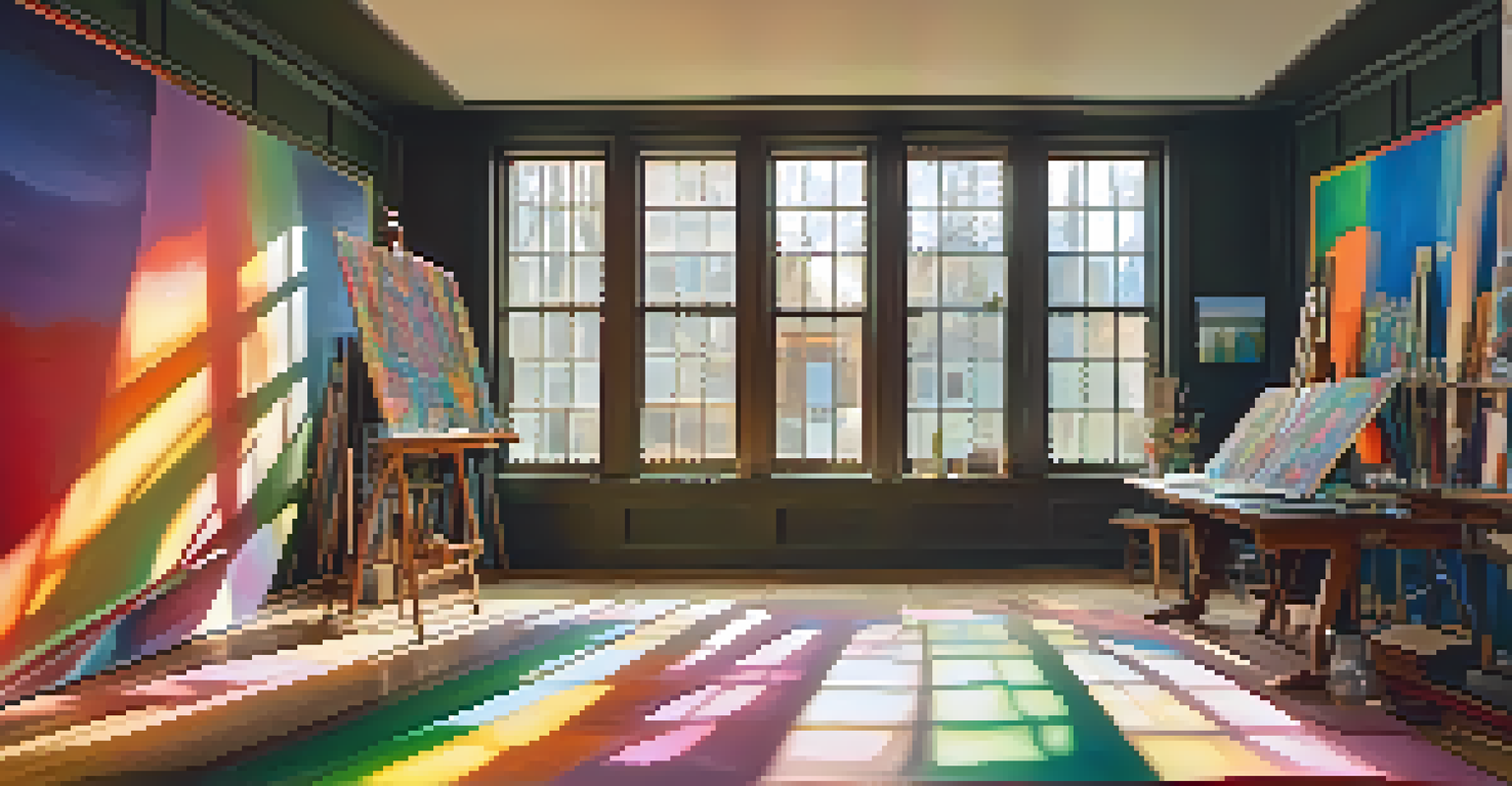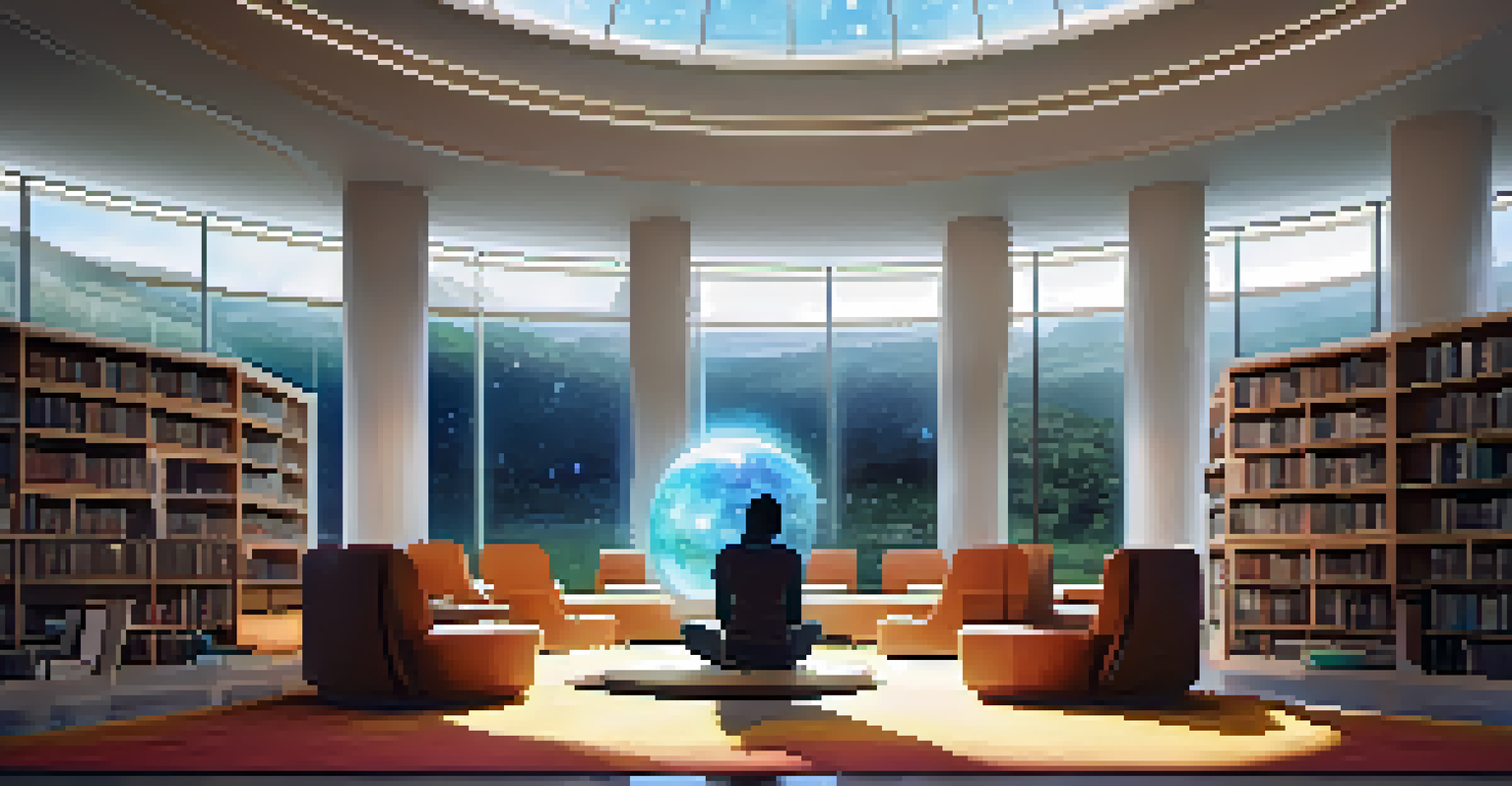The Intersection of Science Fiction, Entheogens, and Creativity

Understanding Science Fiction and Its Impact on Creativity
Science fiction has long served as a playground for imagination, allowing writers and thinkers to explore possibilities beyond our current reality. It challenges conventional boundaries, presenting futuristic worlds that inspire innovation and creativity. Notably, authors like Isaac Asimov and Philip K. Dick have created narratives that not only entertain but also provoke thought about technological advancements and societal changes.
Science fiction is the most important literature that we have, because it is a literature of ideas.
The genre encourages readers to envision scenarios that stretch the limits of what is known, fostering a mindset open to new ideas. For example, Asimov's 'Robots' series raised questions about artificial intelligence that resonate today as we grapple with AI ethics. This imaginative exploration often leads to real-world innovations, showcasing the profound influence of science fiction on our creative processes.
Moreover, the themes presented in science fiction often reflect our hopes, fears, and curiosities about the future. As we engage with these stories, we begin to think critically about the implications of technology and its potential impact on humanity. This critical thinking is a crucial aspect of creativity, driving us to imagine and create solutions to the challenges we face.
The Role of Entheogens in Expanding Consciousness
Entheogens, or psychoactive substances used in spiritual contexts, have been utilized for centuries to expand human consciousness. These substances can alter perception and thought processes, offering unique insights that may not be readily accessible in ordinary states of mind. Many artists, writers, and thinkers have turned to entheogens in search of inspiration and deeper understanding of the human experience.

For instance, the use of psilocybin mushrooms has been linked to creative breakthroughs in various fields, from art to science. Some studies suggest that these substances can enhance divergent thinking, a key component of creativity that involves generating multiple solutions to a problem. This ability to think outside the box can lead to innovative ideas and artistic expressions that deeply resonate with audiences.
Science Fiction Inspires Creativity
Science fiction challenges conventional boundaries, inspiring innovation and prompting critical thinking about technology and society.
However, it's essential to approach entheogens with respect and caution, as their effects can vary significantly among individuals. The context in which they are used plays a crucial role in shaping the experience. When used responsibly, entheogens can serve as tools for exploration, helping individuals tap into their creative potential and gain new perspectives on their work.
Blending Science Fiction and Entheogens in Creative Processes
The fusion of science fiction and entheogens creates a unique space for creative exploration. Writers and artists can draw inspiration from altered states of consciousness while crafting narratives that challenge our understanding of reality. The imaginative landscapes of science fiction pair harmoniously with the mind-expanding qualities of entheogens, resulting in works that push boundaries and provoke thought.
Psychedelics are a way to expand your mind, a way to experience the world in a different way.
Consider the works of authors like Aldous Huxley, who famously wrote 'The Doors of Perception' after exploring mescaline. His experiences not only influenced his writing but also shaped cultural conversations about consciousness and perception. This intersection can lead to groundbreaking ideas that resonate across generations, fostering a deeper connection between art and science.
Furthermore, the themes explored in science fiction often mirror the experiences induced by entheogens, such as altered perceptions of time and space. This synergy invites audiences to question their realities and consider alternative perspectives, ultimately enhancing the creative journey. By marrying these two realms, creators can produce works that inspire and challenge our understanding of existence.
Historical Context: Entheogens in Science Fiction Literature
Throughout history, entheogens have appeared in various forms within science fiction literature, often serving as catalysts for transformation. From the spice melange in Frank Herbert's 'Dune' to the mind-expanding drug in Aldous Huxley’s 'Brave New World,' these substances are depicted as tools that unlock deeper levels of consciousness. These narratives spark discussions about the ethical implications of using such substances within society.
Moreover, these references often highlight humanity's quest for knowledge and self-discovery. As characters ingest these substances, they embark on journeys that reveal hidden truths about themselves and their worlds. Readers are invited to reflect on their own experiences and the role that exploration—both internal and external—plays in the quest for understanding.
Entheogens Enhance Creative Insight
Psychoactive substances, or entheogens, can expand consciousness and enhance creative processes, offering new perspectives and solutions.
This historical context enriches the conversation around entheogens in modern literature, encouraging contemporary authors to draw from these themes. The legacy of incorporating psychoactive experiences into narratives continues to inspire new generations of writers, reminding us of the powerful connection between altered states of consciousness and creative expression.
Modern Perspectives: Entheogens and Current Creative Movements
In recent years, there has been a resurgence of interest in entheogens, particularly as part of modern creative movements. Artists, musicians, and writers are increasingly exploring these substances as tools for enhancing creativity and self-exploration. This revival is not just about personal experiences; it’s also about fostering community and discussion around the benefits and risks of entheogen use in creative processes.
For instance, psychedelic art has gained prominence, showcasing vibrant visuals inspired by altered states of consciousness. These artworks often challenge traditional perceptions and invite viewers to experience reality from a different angle. Similarly, musicians are also experimenting with soundscapes that reflect these mind-expanding experiences, creating immersive environments for listeners.
This modern perspective positions entheogens as more than just substances; they are viewed as pathways to deeper understanding and connectivity. As creative communities continue to embrace this narrative, conversations around the safe and responsible use of entheogens are becoming increasingly important. This shift encourages a culture of openness and exploration in the creative process.
The Risks and Ethical Considerations of Using Entheogens
While entheogens can offer profound insights and creativity, it's essential to acknowledge the potential risks and ethical considerations involved in their use. The experience can vary widely, and not everyone may respond positively to these substances. Issues such as mental health and the context in which they are consumed play critical roles in determining the outcome of the experience.
Moreover, the societal implications of entheogen use cannot be overlooked. Historically, these substances have been stigmatized, leading to legal and social challenges for those who seek to explore them. It's crucial to foster informed discussions about the responsible use of entheogens, ensuring that individuals are aware of potential effects and legal ramifications.
Synergy of Fiction and Entheogens
The fusion of science fiction and entheogens creates a unique creative space, inviting audiences to explore altered perceptions of reality.
Ultimately, navigating the landscape of entheogens requires a balanced approach that considers both the creative potential and the associated risks. By promoting responsible practices and open conversations, we can create a framework that encourages exploration while prioritizing safety and well-being. This thoughtful approach can lead to a more nuanced understanding of the interplay between entheogens and creativity.
Future Possibilities: Where Science Fiction and Entheogens May Lead
As we look to the future, the intersection of science fiction and entheogens holds exciting possibilities for creativity and innovation. We may see a continued exploration of these themes in literature, art, and beyond, as creators push the boundaries of imagination and consciousness. This ongoing dialogue may lead to new narratives that challenge our understanding of reality and inspire future generations.
Additionally, advancements in neuroscience and psychology could shed light on the mechanisms behind creativity and the effects of entheogens. As we gain a deeper understanding of how these substances influence thought processes, we may be able to harness their potential in more structured and beneficial ways. This research could bridge the gap between scientific inquiry and artistic expression, fostering collaboration across disciplines.

Ultimately, the journey of exploring the intersection of science fiction, entheogens, and creativity is just beginning. As we navigate this evolving landscape, we may uncover new insights that not only enrich our creative endeavors but also enhance our understanding of consciousness itself. The future promises a vibrant tapestry of ideas waiting to be woven together by the curious minds of today.